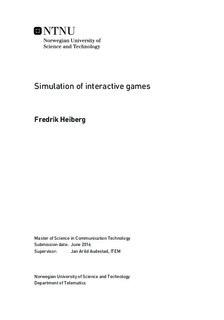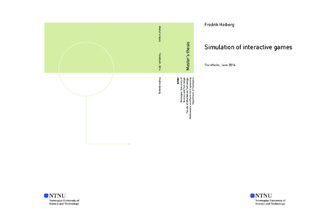| dc.description.abstract | Interactive online games are increasingly popular in today's society, and the industry is growing fast. Games take place in a virtual world and involve interaction with other players. Some online games connect millions of people, and the game studios enjoy enormous revenue utilising different business models. The interactive game market has changed a lot over the years, and player demands have increased concerning functionality, content, and price. As a result, the costs related to development and operation of these games are very high. To justify this price, it is essential that the games become successful, and that they contribute to income even after the initial purchase.
In this paper, factors concerning player behaviour are studied. Factors include finding reasons why people join or leave a particular game, what events contribute to extending the lifetime of a game, how competition and cooperation affect the market evolution, and how game studios can react to change the market outcome. In particular, network effects, Word-of-Mouth (WOM), critical mass, churning, and cooperation are studied, as well as some history to get a better understanding of how the interactive game market has evolved, how it works, and how popular games have gained their position.
System Dynamics (SD) is utilised to simulate and measure different market factors. A model called Buyer Player Quitter (BPQ) model is developed. This model is used to simulate different market scenarios, including a one supplier market, a market with two competing games, and a market with three games including competition and cooperation. Each scenario highlights different effects. In addition, two models specifically designed to recreate empirical data from two existing games are created. These models prove the impact of the discussed market factors in actual Massive Multiplayer Online Games (MMOG).
Finally, simulation scenarios are created and conducted, and the results are analysed and discussed. The main findings involve the importance of generating initial adoption to reach critical mass. Once critical mass is reached, network effects and WOM becomes essential to generate a significant player base. Also, updates and expansions help a game reach a bigger audience while competition and cooperation have a major impact on growth and the lifetime of games. | |

